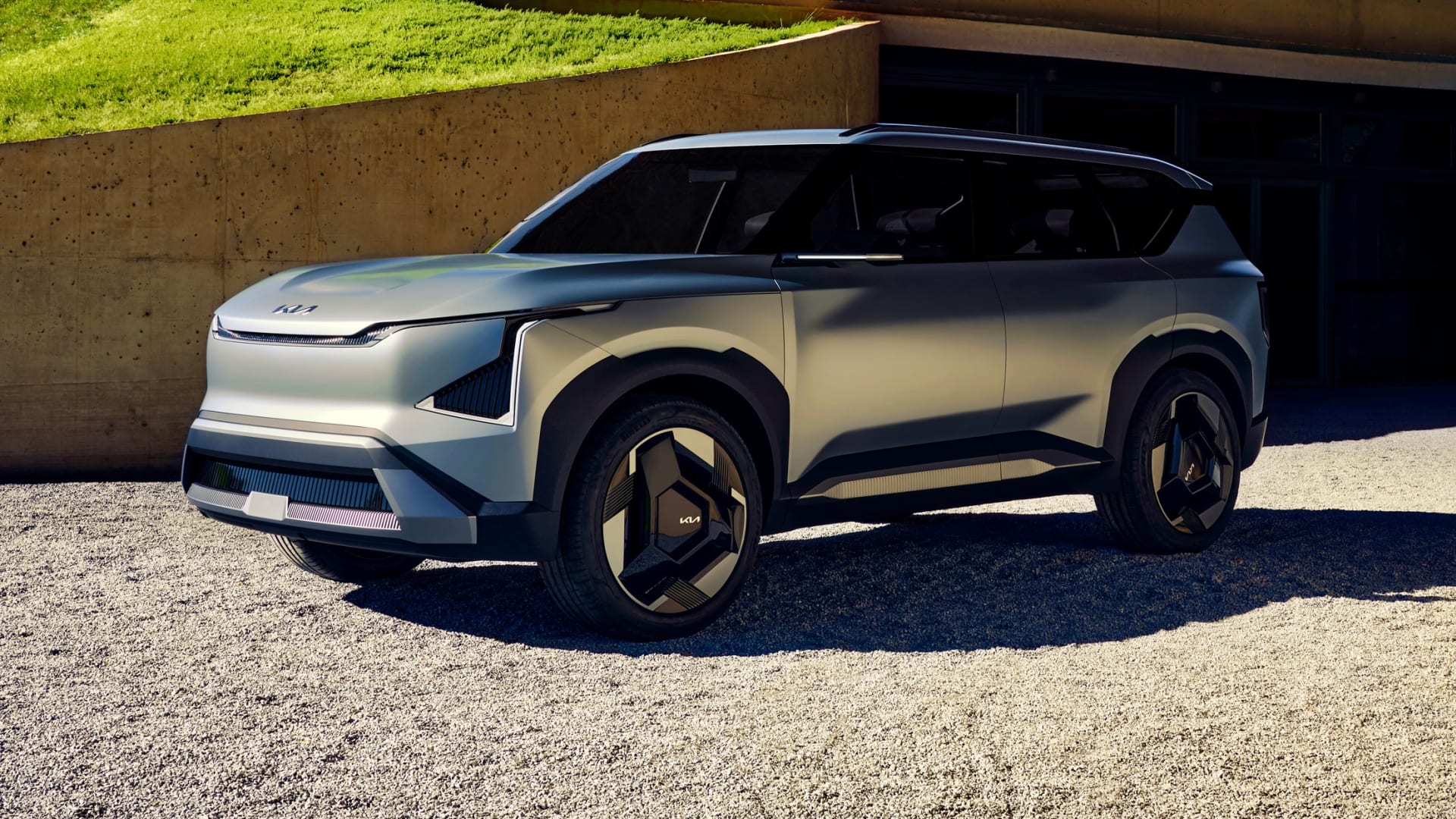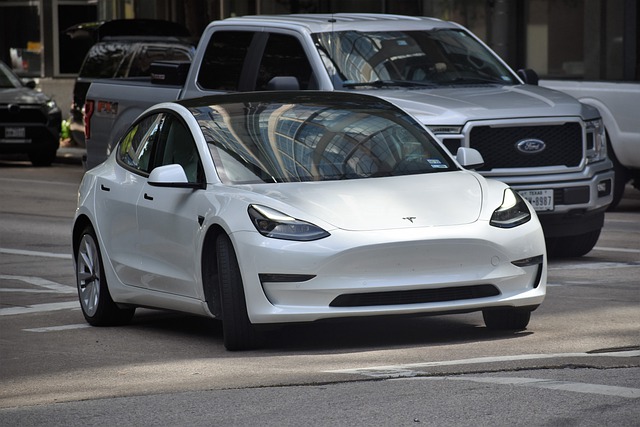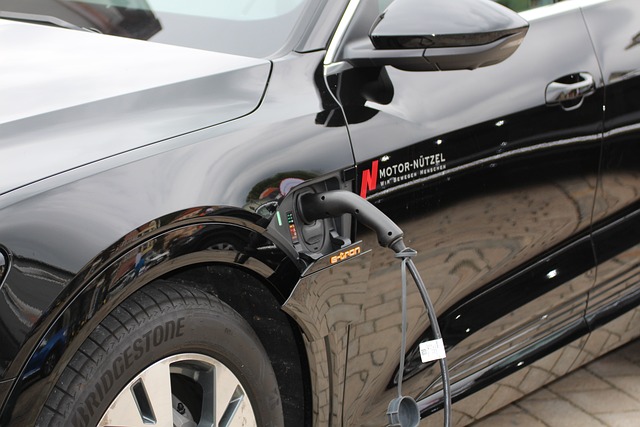
Reducing the use of gas-powered cars is crucial for preventing catastrophic global warming, but recent headlines suggest that influential U.S. car companies are encountering difficulties in transitioning to all-electric vehicles. If these automakers fail to fulfill their commitments to electric vehicles, it could have severe consequences for the planet, including rising sea levels, melting glaciers, and deadly heatwaves. The urgency to transition to electric vehicles is highlighted by the staggering amount of emissions produced by carmakers each year, with gas-powered cars contributing to 75% of greenhouse gas emissions from global transport.
The majority of Americans choosing to buy electric vehicles does not directly cause the demise of a specific ice shelf in Antarctica. Science does not operate on such direct lines of causality. However, it is undeniable that reducing the use of gas-powered cars is crucial for preventing catastrophic global warming. Surprisingly, some of the most influential car companies in the U.S. have a significant impact on global emissions. Unfortunately, recent headlines suggest that these companies are encountering unexpected difficulties in transitioning to all-electric vehicles as they had promised. If these automakers fail to fulfill their commitments to electric vehicles, it could have severe consequences for the planet. The earth has already experienced a 1-degree increase in temperature.
Since the Industrial Revolution, aggressive burning of fossil fuels has resulted in an increase of 1 degree Celsius (or 2 degrees Fahrenheit) in global temperatures. Scientists warn that exceeding this level of warming could lead to catastrophic outcomes such as rising sea levels, melting glaciers, and deadly heatwaves. To prevent such scenarios, the Paris Agreement was established in 2015 with the participation of almost every country. This agreement sets specific emission limits in order to curb climate change. In the best-case scenario, we must prevent global temperatures from surpassing 1.5 degrees Celsius above pre-industrial levels by the end of the century. If this target proves unattainable, our goal is to limit warming to under 2 degrees Celsius.
With the way things are going, keeping under 2 degrees will be a stroke of luck. The calculations involving these two numbers are the basis for every business pledge to reach “net zero” or become more “sustainable,” including carmakers’ plans for electric vehicles. This is why a number of automakers have made commitments to go all-electric by a certain future date. For example, Mercedes-Benz has set the target of 2030 in most of its major markets, General Motors aims for 2035, and Volkswagen has set a goal for the 2030s. Meanwhile, other car companies are also striving to reduce emissions and have made pledges to incorporate a mix of hybrids or hydrogen vehicles.
If car companies decide to push back or cancel electrification goals, or if regulations are loosened, the climate impact of these moves should be taken into account. The world’s leading scientific body on climate change has stated that in order to have a 50% chance of keeping warming below 1.5 degrees Celsius, we can only emit 500 billion metric tons more carbon dioxide into the atmosphere. For the 2 degrees target, the remaining carbon budget is 1,350 billion metric tons. Beyond these limits, our chances of avoiding disaster decrease significantly.
The importance of the transition to electric vehicles becomes even more evident when considering the amount of emissions produced by carmakers selling gas-powered cars each year. While it may be difficult to comprehend the sheer scale of five hundred billion metric tons, these numbers highlight the urgent need for a zero-emission future. Removing gasoline- and diesel-powered cars from the road is crucial in staying within the global carbon budget. Gas-powered cars alone contribute to 75% of the greenhouse gas emissions from global transport, which accounts for approximately one-fifth of the world’s total emissions.
Transportation is currently the number one source of carbon emissions in the U, and China, known as one of the world’s top polluters, contributes a significant amount of these emissions. Surprisingly, some of America’s most well-known and historic brands, such as General Motors and Ford, have had a notable impact on these numbers. Last year, General Motors held the largest market share for cars sold in the U, while Ford held the third-largest share. When it comes to emissions from these big automakers, they can be classified into three categories, commonly referred to in corporate climate jargon as “scopes”.
Scope 1 emissions involve sources that a business directly owns, such as company gas-powered cars. On the other hand, Scope 2 emissions arise from the energy that a company purchases to power its operations. These emissions are relatively straightforward for a business to track and include in a corporate sustainability report. The final category, Scope 3 emissions, consists of emissions generated by factors beyond the company’s control. This includes business travel, employee commuting, and customer usage of a product or service, such as cars driven out of a dealer’s lot. Calculating this portion of Scope 3 emissions can be challenging, especially for certain industries.
Automakers face a simple mathematical problem when it comes to greenhouse gas emissions. They must consider the emissions produced by their cars, the quantity of cars sold, and the average distance each car travels throughout its lifetime. However, these companies are not particularly interested in transparency. The largest polluters, including car manufacturers, are hesitant to disclose their Scope 3 emissions. This is despite the fact that these emissions often surpass those from Scope 1 and 2. Additionally, there are no federal regulations mandating disclosure. As an example, Mercedes Benz only includes Scope 1 and 2 emissions in its sustainability reports, omitting Scope 3 emissions.
Public and investor pressure to address climate change has led many big companies to disclose their emissions data. Polestar, for example, prominently displays a breakdown of its Scope 1, 2, and 3 emissions in its sustainability report. However, the numbers reported by certain automakers are truly staggering. Ford, in 2022, revealed that the Scope 3 emissions produced by the 4.2 million cars it sold globally amounted to approximately 319,568,185 metric tons of CO2 equivalents (CO2e). This revelation highlights the urgency of taking action to reduce carbon emissions in the automotive industry.
Last year, the cars sold by Ford globally will generate greenhouse gas emissions higher than the yearly emissions of Taiwan. Similarly, GM reported that the emissions from the cars it sold in 2022 were almost equal to the emissions of Ukraine in the previous year. These numbers are enormous. For instance, the combined yearly sales of Ford and GM alone will produce more greenhouse gases than the total emissions of Vietnam’s 97 million inhabitants last year.
Last year, a report was issued estimating that carmakers are under-reporting their Scope 3 emissions by as much as 50%. Therefore, the actual number of emissions is believed to be much higher than what is reported. It is important to consider the fact that just one or two companies release a significant amount of greenhouse gases into the atmosphere each year. This realization diminishes the perceived magnitude of the 500 billion-ton carbon budget. Even if every automaker were to switch to electric vehicles (EVs) tomorrow, it would not eliminate emissions entirely. EVs still have associated emissions, which depend on the type of energy provided by the grid they are connected to. Additionally, the production of EVs and batteries also contributes to emissions.
Automakers like Ford and GM play a crucial role in global decarbonization efforts. While many auto companies are actively improving the efficiency of gas-powered cars and introducing hybrid models to reduce emissions, the impact of Ford and GM’s production is unparalleled compared to other consumer goods companies. Their transition to electric vehicles (EVs) is intended to eliminate the majority of their Scope 3 emissions, which would have significant implications for the world’s carbon budgets. Thus, their contribution towards reducing emissions cannot be overlooked.
Last year, GM made a prediction that it would increase electric vehicle sales and become an all-electric company by 2035. This plan is expected to reduce the company’s Scope 3 emissions by almost 80% by the mid-2030s. The main way they plan to achieve this is by replacing gas-powered cars with electric ones. However, it’s important to note that this solution is a long-term one, as there are currently millions of gas cars on the road that will continue to be in use for many more years.
Recently, Ford made some announcements indicating that they would be pausing certain investments in their electric vehicle transition, including a battery factory in Kentucky. On the other hand, GM CEO Mary Barra has reassured investors that the company is still committed to their 2035 target. However, they will be adjusting certain sales targets and cutting costs in other areas.
Amidst a gloomy backdrop of car manufacturers and dealers voicing complaints about the lackluster sales of electric vehicles, there appears to be a concerted effort by the industry to portray itself as fully supportive of the transition to EVs and environmental conservation. However, they argue that the implementation of new policies and regulations is simply moving too quickly, requesting politicians to show compassion by allowing them to continue selling gas-powered cars for a little while longer. It is worth noting that Ford, disregarding these sentiments, achieved a record-breaking month of EV sales in November, a trend observed throughout the industry. Additionally, automakers are flooding the market with large and costly electric SUVs, instead of diversifying their offerings to encompass more affordable car models that consumers desire.
GM and Ford, two American automakers, primarily earn their profits from large, gas-powered trucks and SUVs rather than economy cars. The dilemma for automakers is that to make money on electric vehicles, they need to achieve high volume sales. However, in order to achieve volume, they have to lower prices. This presents a challenging leap of faith. Chris Harto, a senior policy analyst at Consumer Reports, explains that automakers are caught in a Catch-22 situation. They will eventually have to fully embrace electric vehicles, but it becomes more difficult when they are currently losing money on the EVs they are selling. This reluctance to fully commit to electric vehicles adds a new factor to the climate equation: time.
Some of the most crucial decades for reducing carbon emissions are currently being emphasized by scientists worldwide. The danger lies in various critical ecosystems on Earth, such as Antarctic ice sheets and permafrost. The Antarctic ice sheets play a vital role in preventing the continent’s enormous glaciers from melting into the sea and causing catastrophic rises in ocean levels. Similarly, the world’s permafrost serves as a trap for significant amounts of CO2, which is released into the atmosphere when the ground becomes too warm. These vulnerable ecosystems are now at risk of collapsing and exacerbating the already ongoing runaway warming levels.
The possibility of reaching a critical turning point in the near future becomes increasingly likely if the current rate of global warming is maintained, alongside the persistent emission of considerable amounts of greenhouse gases by companies such as Ford and GM through the vehicles they produce. It is evident that automakers prefer to create an illusion that we can afford to wait patiently for their progress on the development of electric cars. Although this may not be the desired message for their stakeholders, the truth remains that we cannot overlook the excessively high emissions caused by each vehicle they manufacture.
The transition to electric vehicles is crucial for preventing catastrophic global warming, but some influential American car companies are struggling to fulfill their commitments to electrification. These companies, such as General Motors and Ford, have a significant impact on global emissions, with their gas-powered vehicles contributing to 75% of greenhouse gas emissions from global transport. The failure to transition to electric vehicles and reduce emissions could have severe consequences for the planet, including rising sea levels, melting glaciers, and deadly heatwaves



